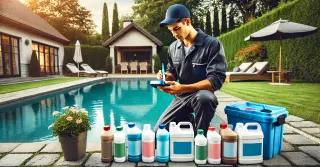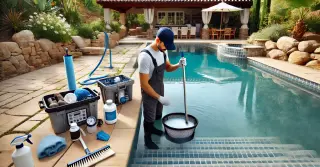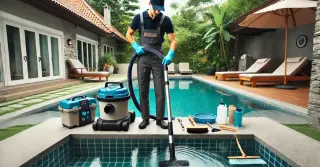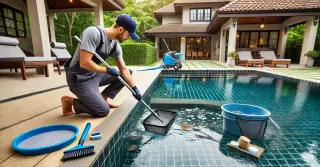Pool Chemical Balance Camden MI

Maintaining the proper chemical balance is essential for a safe and enjoyable swimming experience. Correct chemical levels stop algae and bacteria growth, maintain clear, clean water, and protect the pool's surface and equipment.
- Balancing pH Levels: The pH balance in your pool reflects its acidity or alkalinity. A balanced pH level should be between 7.2 and 7.6. Low pH levels result in acidic water, causing skin irritation and equipment corrosion. If the pH is too high, the water becomes alkaline, leading to cloudy water and scaling on the pool surfaces. Frequent pH testing and adjustments is vital for swimmer comfort and safety.
- Monitoring Chlorine Levels: Chlorine plays a crucial role in pool sanitation, killing bacteria, algae, and other harmful microorganisms. The ideal chlorine level should be between 1-3 ppm (parts per million). Low chlorine levels cause unsanitary water, with bacteria and algae proliferating. Excessive chlorine leads to skin and eye irritation and create a strong chlorine smell. Regularly testing and adjusting chlorine levels ensures effective sanitation and swimmer comfort.
Balancing AlkalinityTotal alkalinity is another critical aspect of pool water chemistry. Alkalinity buffers pH levels, avoiding sudden pH changes. The ideal range for total alkalinity is between 80-120 ppm.
- Stabilizing pH Levels: Correct alkalinity levels ensure stable pH, preventing rapid pH shifts that cause skin irritation and surface damage. Low alkalinity causes pH levels to fluctuate, making consistent balance difficult. If alkalinity is too high, it can make the water cloudy and lead to scaling. Regularly testing and adjusting alkalinity levels is vital for a balanced and stable pool.
- Managing Calcium Hardness: Calcium hardness indicates the calcium level in pool water. Proper calcium hardness levels range from 200 to 400 ppm. Insufficient calcium causes corrosive water, damaging surfaces and equipment. If calcium levels are too high, it can cause scaling on pool surfaces and cloud the water. Frequent calcium hardness testing and adjustments is crucial for safeguarding your pool and maintaining clear water.
Safe Handling of Pool ChemicalsUsing and storing pool chemicals safely is essential for both safety and effectiveness. Chemicals should be stored in a cool, dry place, away from direct sunlight and out of reach of children and pets. Follow the manufacturer's instructions for proper dosing and application.
- Measuring and Mixing Chemicals: Measuring pool chemicals accurately is crucial for maintaining balance. Using too much or too little can disrupt the chemical balance and affect water quality. Always use a clean, dry measuring cup or scoop and never combine chemicals directly. Mix chemicals in water if required, following the instructions carefully.
- Chemical Reaction Awareness: Some chemicals can react dangerously when combined. Never mix chlorine with acid, for example. Knowing these interactions prevents accidents and ensures safe handling. Keep chemicals separate and handle with caution to avoid dangerous reactions.
Ensuring the right chemical balance in your pool is crucial for safety, cleanliness, and enjoyment. By regularly testing and adjusting pH, chlorine, alkalinity, and calcium levels, you maintain optimal water conditions.
Safe handling and storage of pool chemicals enhance the health and safety of your pool.




